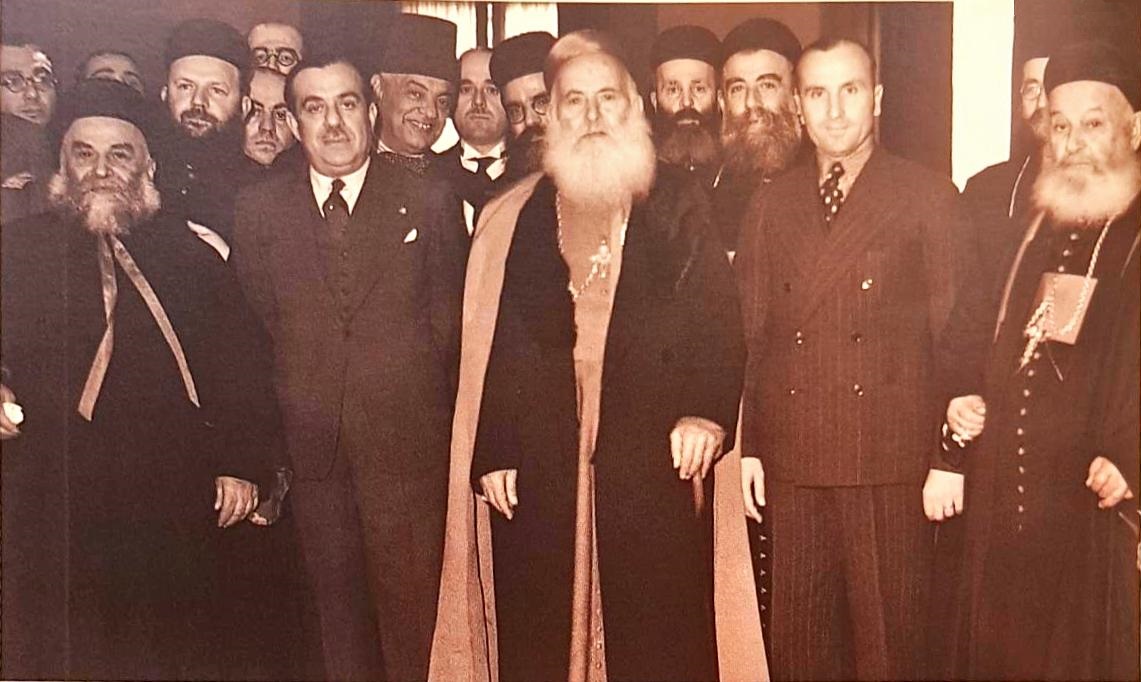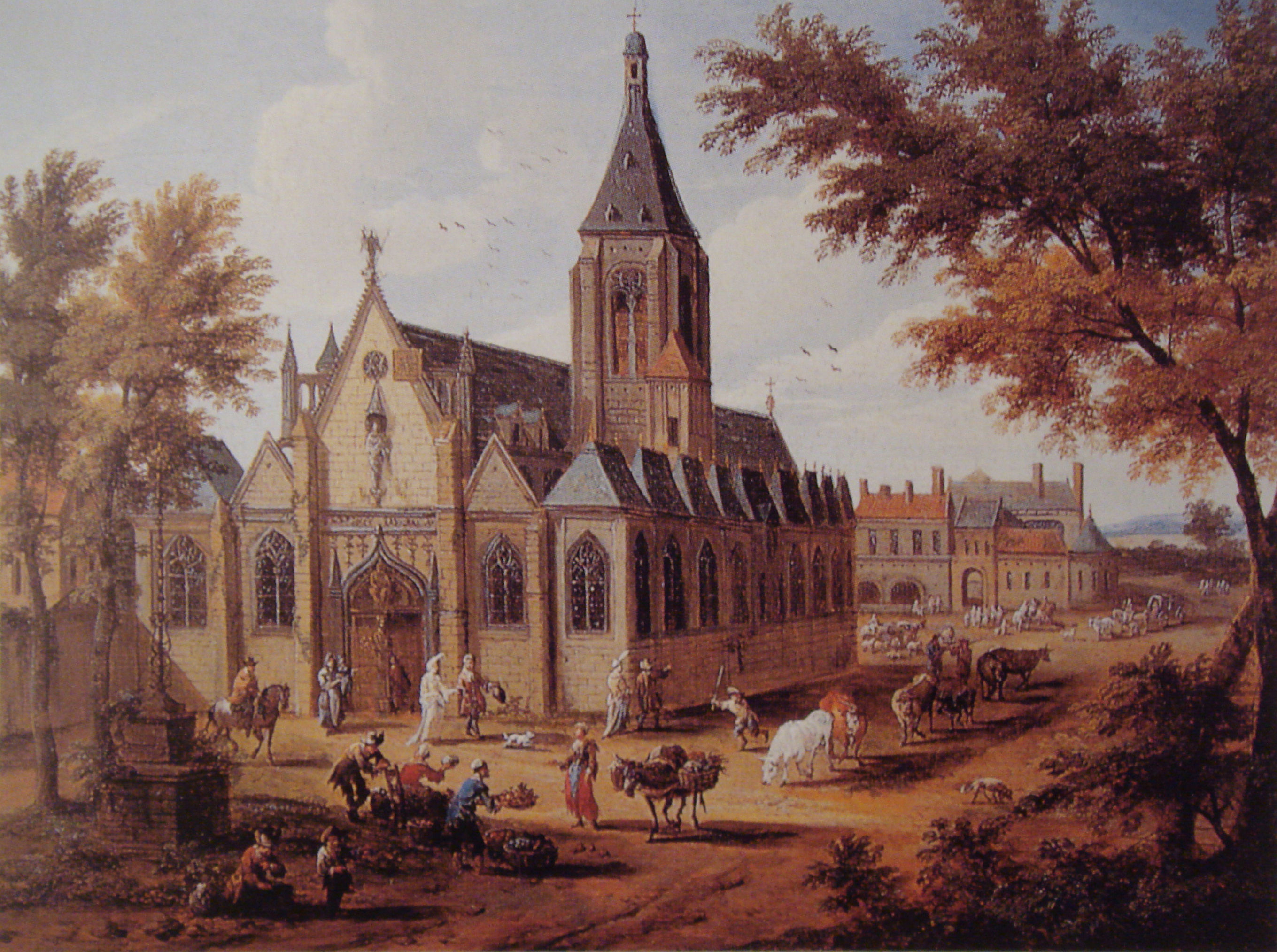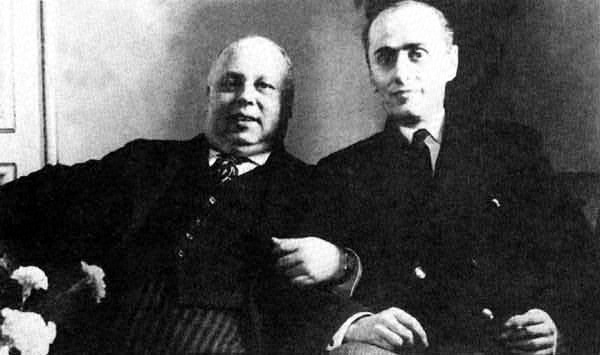|
Anthony Peter Arida
Anthony II Peter Arida (August 2, 1863 – May 19, 1955) (or ''Selim Ben Abdel Ahad Arida'', ''Antoine Boutros Arida'', ar, أنطونيوس الثاني بطرس عريضة) was bishop of the Maronite Catholic Archeparchy of Tripoli and 73rd Maronite Patriarch of Antioch from 1932 until his death in 1955. Life Anthony Peter Arida was born Selim Ben Abdel Ahad Arida in Bkerkasha, Lebanon on February 2, 1863. He learned Arabic and Syriac as a schoolboy. From 1884 to 1890 he studied theology at the school of Saint-Sulpice, Paris. He was ordained a priest on September 28, 1890, and served as secretary and canon lawyer for the Maronite Patriarch John Peter El Hajj. Arida was appointed honorary prelate by Pope Pius X on July 31, 1905; appointed Maronite bishop of Tripoli, Lebanon on June 7, 1908; consecrated bishop on June 18, 1908, by Maronite Patriarch of Antioch, Elias Peter Hoayek; and installed in his episcopal see on June 28 of the same year. On January 8, 1932, Anthony ... [...More Info...] [...Related Items...] OR: [Wikipedia] [Google] [Baidu] |
His Beatitude
His Eminence (abbreviation H.Em. or H.E. or HE) is a style (manner of address), style of reference for high nobility, still in use in various religious contexts. Catholicism The style remains in use as the official style or standard form of address in reference to a cardinal (Catholicism), cardinal of the Catholic Church, reflecting his status as a Prince of the Church. A longer, and more formal, title is "His (or Your when addressing the cardinal directly) Most Reverend Eminence". Patriarchs of Eastern Catholic Churches who are also cardinals may be addressed as "His Eminence" or by the style particular to Catholic patriarchs, His Beatitude. When the Grand master (order), Grand Master of the Sovereign Military Order of Malta, the head of state of their sovereign territorial state comprising the island of Malta until 1797, who had already been made a Reichsfürst (i.e., prince of the Holy Roman Empire) in 1607, became (in terms of honorary order of precedence, not in the act ... [...More Info...] [...Related Items...] OR: [Wikipedia] [Google] [Baidu] |
Église Saint-Sulpice, Paris
, image = Paris Saint-Sulpice Fassade 4-5 A.jpg , image_size = , pushpin map = Paris , pushpin label position = , coordinates = , location = Place Saint-Sulpice 6th arrondissement, Paris , country = France , denomination = Roman Catholic , religious institute = Society of the Priests of Saint Sulpice , website = , bull date = , founded date = , founder = , dedication = Sulpitius the Pious , dedicated date = , consecrated date = , relics = , status = Parish church , functional status = Active , heritage designation = , architect = , style = Baroque , years built = , groundbreaking = 1646 , completed date = 1870 , capacity = , length = , width ... [...More Info...] [...Related Items...] OR: [Wikipedia] [Google] [Baidu] |
Maronites
The Maronites ( ar, الموارنة; syr, ܡܖ̈ܘܢܝܐ) are a Christian ethnoreligious group native to the Eastern Mediterranean and Levant region of the Middle East, whose members traditionally belong to the Maronite Church, with the largest concentration long residing near Mount Lebanon in modern Lebanon. The Maronite Church is an Eastern Catholic particular church in full communion with the Pope and the rest of the Catholic Church, whose membership also includes non-ethnic Maronites. The Maronites derive their name from the Syriac Christian saint Maron, some of whose followers migrated to the area of Mount Lebanon from their previous place of residence around the area of Antioch, and established the nucleus of the Antiochene Syriac Maronite Church. Christianity in Lebanon has a long and continuous history. Biblical scriptures purport that Peter and Paul evangelized the Phoenicians, whom they affiliated to the ancient patriarchate of Antioch. The spread of Christianity in ... [...More Info...] [...Related Items...] OR: [Wikipedia] [Google] [Baidu] |
Encyclical
An encyclical was originally a circular letter sent to all the churches of a particular area in the ancient Roman Church. At that time, the word could be used for a letter sent out by any bishop. The word comes from the Late Latin (originally from the Latin , a Latinization of Greek (), meaning "circular", "in a circle", or "all-round", also part of the origin of the word encyclopedia). The term has been used by Catholics, Anglicans and the Eastern Orthodox Church. Catholic usage Although the term "encyclical" originally simply meant a circulating letter, it acquired a more specific meaning within the context of the Catholic Church. In 1740, Pope Benedict XIV wrote a letter titled ''Ubi primum'', which is generally regarded as the first encyclical. The term is now used almost exclusively for a kind of letter sent out by the pope. For the modern Roman Catholic Church, a papal encyclical is a specific category of papal document, a kind of pastoral letter concerning Catholic doctrin ... [...More Info...] [...Related Items...] OR: [Wikipedia] [Google] [Baidu] |
Maronite
The Maronites ( ar, الموارنة; syr, ܡܖ̈ܘܢܝܐ) are a Christian ethnoreligious group native to the Eastern Mediterranean and Levant region of the Middle East, whose members traditionally belong to the Maronite Church, with the largest concentration long residing near Mount Lebanon in modern Lebanon. The Maronite Church is an Eastern Catholic particular church in full communion with the Pope and the rest of the Catholic Church, whose membership also includes non-ethnic Maronites. The Maronites derive their name from the Syriac Christian saint Maron, some of whose followers migrated to the area of Mount Lebanon from their previous place of residence around the area of Antioch, and established the nucleus of the Antiochene Syriac Maronite Church. Christianity in Lebanon has a long and continuous history. Biblical scriptures purport that Peter and Paul evangelized the Phoenicians, whom they affiliated to the ancient patriarchate of Antioch. The spread of Christianity ... [...More Info...] [...Related Items...] OR: [Wikipedia] [Google] [Baidu] |
Charters Towers
Charters Towers is a rural town in the Charters Towers Region, Queensland, Australia. It is by road south-west from Townsville on the Flinders Highway. During the last quarter of the 19th century, the town boomed as the rich gold deposits under the city were developed. After becoming uneconomical in the 20th century, profitable mining operations have commenced once again. In the , Charters Towers had a population of 8,120 people. Geography and climate The urban area of the town of Charters Towers includes its suburbs: Charters Towers City (the centre of the city); Richmond Hill, Toll, and Columbia to the north, Queenton to the east, Grand Secret and Alabama Hill to the west, and Towers Hill, Mosman Park, and Millchester to the south. Charters Towers township is only mildly elevated at above sea-level, but this has a noticeable effect, with lower humidity and wider temperature variations compared to nearby Townsville. Charters Towers obtains its water supply from the n ... [...More Info...] [...Related Items...] OR: [Wikipedia] [Google] [Baidu] |
Australia
Australia, officially the Commonwealth of Australia, is a Sovereign state, sovereign country comprising the mainland of the Australia (continent), Australian continent, the island of Tasmania, and numerous List of islands of Australia, smaller islands. With an area of , Australia is the largest country by area in Oceania and the world's List of countries and dependencies by area, sixth-largest country. Australia is the oldest, flattest, and driest inhabited continent, with the least fertile soils. It is a Megadiverse countries, megadiverse country, and its size gives it a wide variety of landscapes and climates, with Deserts of Australia, deserts in the centre, tropical Forests of Australia, rainforests in the north-east, and List of mountains in Australia, mountain ranges in the south-east. The ancestors of Aboriginal Australians began arriving from south east Asia approximately Early human migrations#Nearby Oceania, 65,000 years ago, during the Last Glacial Period, last i ... [...More Info...] [...Related Items...] OR: [Wikipedia] [Google] [Baidu] |
Argentina
Argentina (), officially the Argentine Republic ( es, link=no, República Argentina), is a country in the southern half of South America. Argentina covers an area of , making it the second-largest country in South America after Brazil, the fourth-largest country in the Americas, and the eighth-largest country in the world. It shares the bulk of the Southern Cone with Chile to the west, and is also bordered by Bolivia and Paraguay to the north, Brazil to the northeast, Uruguay and the South Atlantic Ocean to the east, and the Drake Passage to the south. Argentina is a federal state subdivided into twenty-three provinces, and one autonomous city, which is the federal capital and largest city of the nation, Buenos Aires. The provinces and the capital have their own constitutions, but exist under a federal system. Argentina claims sovereignty over the Falkland Islands, South Georgia and the South Sandwich Islands, and a part of Antarctica. The earliest recorded human prese ... [...More Info...] [...Related Items...] OR: [Wikipedia] [Google] [Baidu] |
Lebanese Independence Day
Lebanese Independence Day ( ar, عيد الإستقلال اللبناني, translit=Eid Al-Istiqlal, lit=Festival of the Independence; french: Indépendance du Liban) is the national day of Lebanon, celebrated on 22 November in commemoration of the end of the French Control over Lebanon in 1943, after 23 years of Mandate rule. Pre-Independence period While the Lebanese have been in a constant struggle for independence from foreign powers since the age of the Old Testament, the modern struggle for Lebanese independence can be traced back to the emergence of Fakhr-al-Din II in the late 16th century, a Druze chief who became the first local leader in a thousand years to bring the major sects of Mount Lebanon into sustained mutual interaction. Fakhr-al-Din also brought western Europe back to Mount Lebanon. The French traveler Laurent d'Arvieux observed massive French commercial buildings in Sidon, Fakhr-al-Din's political centre, where bustling crowds of Islam in Lebanon, Muslims, ... [...More Info...] [...Related Items...] OR: [Wikipedia] [Google] [Baidu] |
Holy See
The Holy See ( lat, Sancta Sedes, ; it, Santa Sede ), also called the See of Rome, Petrine See or Apostolic See, is the jurisdiction of the Pope in his role as the bishop of Rome. It includes the apostolic episcopal see of the Diocese of Rome, which has ecclesiastical jurisdiction over the Catholic Church and the sovereign city-state known as the Vatican City. According to Catholic tradition it was founded in the first century by Saints Peter and Paul and, by virtue of Petrine and papal primacy, is the focal point of full communion for Catholic Christians around the world. As a sovereign entity, the Holy See is headquartered in, operates from, and exercises "exclusive dominion" over the independent Vatican City State enclave in Rome, of which the pope is sovereign. The Holy See is administered by the Roman Curia (Latin for "Roman Court"), which is the central government of the Catholic Church. The Roman Curia includes various dicasteries, comparable to ministries and ex ... [...More Info...] [...Related Items...] OR: [Wikipedia] [Google] [Baidu] |
Bishop
A bishop is an ordained clergy member who is entrusted with a position of authority and oversight in a religious institution. In Christianity, bishops are normally responsible for the governance of dioceses. The role or office of bishop is called episcopacy. Organizationally, several Christian denominations utilize ecclesiastical structures that call for the position of bishops, while other denominations have dispensed with this office, seeing it as a symbol of power. Bishops have also exercised political authority. Traditionally, bishops claim apostolic succession, a direct historical lineage dating back to the original Twelve Apostles or Saint Paul. The bishops are by doctrine understood as those who possess the full priesthood given by Jesus Christ, and therefore may ordain other clergy, including other bishops. A person ordained as a deacon, priest (i.e. presbyter), and then bishop is understood to hold the fullness of the ministerial priesthood, given responsibility b ... [...More Info...] [...Related Items...] OR: [Wikipedia] [Google] [Baidu] |
Tripoli, Lebanon
Tripoli ( ar, طرابلس/ALA-LC: ''Ṭarābulus'', Lebanese Arabic: ''Ṭrablus'') is the largest city in northern Lebanon and the second-largest city in the country. Situated north of the capital Beirut, it is the capital of the North Governorate and the Tripoli District. Tripoli overlooks the eastern Mediterranean Sea, and it is the northernmost seaport in Lebanon. It holds a string of four small islands offshore. The Palm Islands were declared a protected area because of their status of haven for endangered loggerhead turtles (''Chelona mydas''), rare monk seals and migratory birds. Tripoli borders the city of El Mina, the port of the Tripoli District, which it is geographically conjoined with to form the greater Tripoli conurbation. The history of Tripoli dates back at least to the 14th century BCE. The city is well known for containing the Mansouri Great Mosque and the largest Crusader fortress in Lebanon, the Citadel of Raymond de Saint-Gilles. It has the second hig ... [...More Info...] [...Related Items...] OR: [Wikipedia] [Google] [Baidu] |








